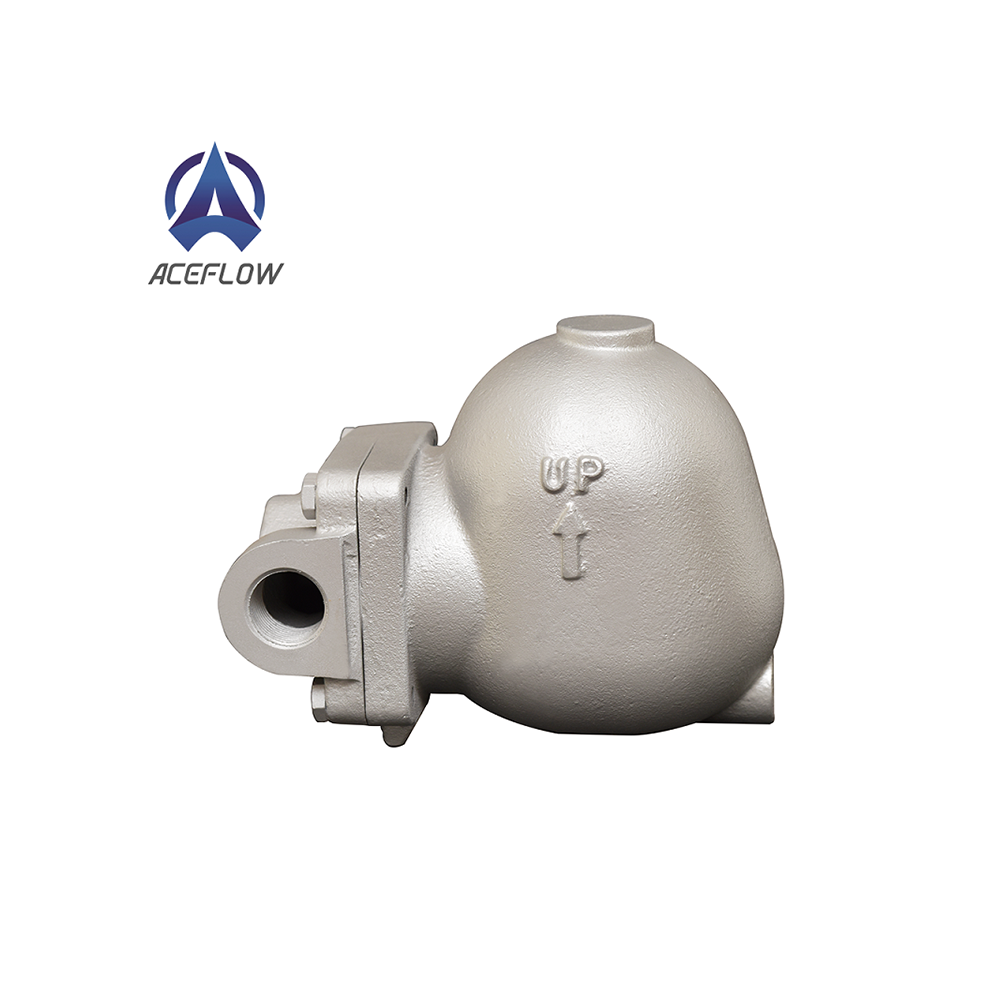What are the specific types of mechanical traps
Mechanical steam trap, also known as float type, uses the density difference between condensate and steam to raise the float and drive the valve disc to open or close through the change of condensate liquid level, thus achieving the purpose of steam blocking and drainage. The supercooling of mechanical steam trap is very small, and it is not affected by the change of working pressure and temperature. If there is no water in the heating equipment, the heating equipment can achieve ideal heat exchange efficiency. The mechanical trap has a back pressure rate of 80% and high working quality. It is an ideal trap for heating equipment in the production process.
Mechanical steam trap includes free floating ball, free semi-floating ball, lever floating ball, inverted bucket, etc.
1. Free float steam trap: the free float steam trap has a simple structure, only a stainless steel hollow float, with finely ground moving parts inside, which is both a float and an opening and closing part, without wearing parts, and has a long service life. The free floating steam trap is suitable for any kind of bad liquid accumulation, especially for drum dryers in paper making, printing and dyeing industries, and is widely installed on various medium-low pressure heat exchange equipment in chemical plants.

2. Free semi-floating ball drain valve: the free semi-floating ball drain valve has only one semi-floating ball cylinder as the moving part, with the opening downward, and the ball cylinder is the opening and closing part and sealing part. The whole spherical surface can be sealed, with long service life, water hammer resistance, no wearing parts, no failure and durability. When the back pressure rate is greater than 80%, condensate can be discharged at saturated temperature, and there is no water in the heating equipment, so that the heating equipment can achieve ideal heat exchange efficiency.
3. Rod float drain valve: The basic characteristics of lever float drain valve are the same as that of free float drain valve. The internal structure is that the float ball is connected with the lever to drive the valve core. The valve opens and closes with the rise and fall of the condensate level. The lever float drain valve is an ideal drain valve for large heating equipment. It uses double seats to increase condensate discharge. The lever ball trap is applicable to any kind of bad liquid accumulation conditions and is widely installed in various high, medium and low pressure heat exchange equipment of chemical plants. Its pressure range is 0-6.3MPa, and its liquid displacement range is 0-160t/h. It is the preferred model for large displacement conditions.
4. Inverted bucket drain valve: inside the inverted bucket drain valve, an inverted bucket is a liquid level sensitive component, and the bucket opening is downward. The bucket is connected with the lever to drive the valve core to open and close the valve. Bucket trap can discharge air, is not afraid of water hammer, and has good anti-pollution performance. Because the bucket drain valve is closed by the upward buoyancy of steam, it is not suitable for use when the working pressure difference is less than 0.1MPA.
The combined superheated steam trap has two isolated valve chambers. The upper and lower valve chambers are connected by two stainless steel pipes. It is a combination of floating ball type and inverted bucket type trap. The structure of the valve is advanced and reasonable. It can timely discharge the condensate formed when the superheated steam disappears under the working conditions of overheating, high pressure and small load, effectively prevent the leakage of superheated steam, and the working quality is high.
Related information








